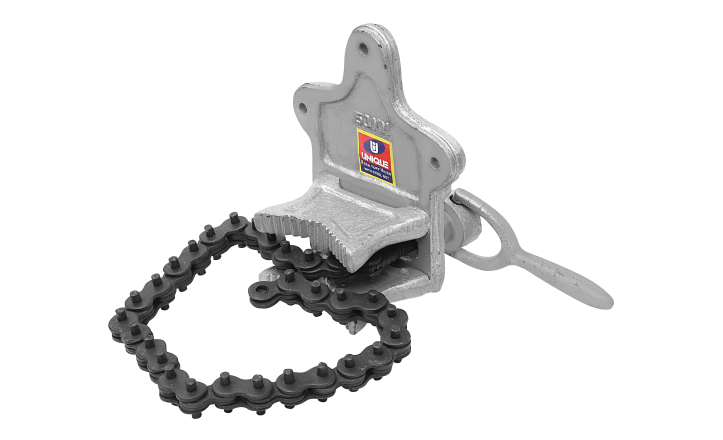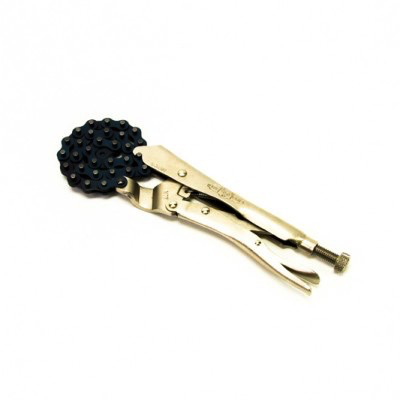
When shooting interiors day-for-night on location, grips need to eliminate all daylight entering the set.
CHAIN VISE GRIP WINDOWS
Grips also do "blackouts" and "tenting-out" windows and doors. This often includes the use of hood mounts, side mounts, suction cup mounts and proprietary clamps to attach film equipment to vehicles without causing damage. Grips also rig picture cars on process trailers, placing camera and lights around the vehicle for driving shots. More advanced rigs can include working with pulleys, steel cable or trusses. Examples of simple rigs include the menace arm, which allows a light to be boomed over set using one stand, or goalposts that span over top of set using two stands. Condors are especially useful at night when they are rigged to raise lights or diffusing material (up to 120 feet in the air) to create moon-effect lighting. The lighting set-ups for these exterior shots can become quite extensive, and the use of boom lifts (called "condors") is common. Grips use overhead frames up to 20' × 20' or larger for the shaping or filtering of sunlight. When shooting day exteriors, grips perform similar functions, but with the sun as the primary light source. This is achieved by setting "solids", made of black fabric, either flags (up to 4' × 4') or rags (6' × 6' or larger) on the non-key light side or wherever the negative fill is desired.

Grips may also be called on to set "negative fill", which is the reduction of ambient or non-directional light, such as ambient sunlight, to raise contrast on the subject. It is rigid insulation made for the construction trade, but was adopted by the film trade because of its "true-white" color and "soft" bounce. The first choice for most film-makers' fill is a product known in the US as beadboard and called "poly", short for polystyrene, in Europe. Grips also set "passive fill" which is a term for the reflected light that is "bounced" back onto a subject on the fill or non- key light side. This work is done by setting stands that hold flags, nets, diffusing materials or other gobos that control the quality, intensity, or shape of the light. Grips handle all the non-electrical equipment that modifies the light. The placement of lighting instruments and electric power distribution is handled by the electricians who work under a gaffer. On all union jobs, grips do not touch the lights themselves. British grips usually belong to BECTU (Broadcasting Entertainment Cinematograph & Theatre Union).

CHAIN VISE GRIP PROFESSIONAL
Canadian grips may also belong to IATSE or to Canada's other professional trade unions including Toronto's Nabet 700, or Vancouver's ACFC. grips typically belong to the International Alliance of Theatrical Stage Employees (IATSE). theatre where it designated stagehands who moved scenery. The term "grip" is derived from an older term in U.S. In the "British System", adopted throughout Europe and the Commonwealth (excluding Canada), a grip is solely responsible for camera mounting and support. In the UK, Australia and most parts of Europe, grips are not involved in lighting. The equipment can be as basic as a tripod standing on a studio floor, to hazardous operations such as mounting a camera on a 100 ft crane, or hanging it from a helicopter swooping above a mountain range. Grips assemble this equipment according to meticulous specifications and push, pull, mount or hang it from a variety of settings. Every scene in a feature film is shot using one or more cameras, each mounted on highly complex, extremely expensive, heavy duty equipment. This equipment, which includes tripods, dollies, tracks, jibs, cranes, and static rigs, is constructed of delicate yet heavy duty parts requiring a high level of experience to operate and move. Grips' responsibility is to build and maintain all the equipment that supports cameras. The second function is to work closely with the electrical department to create lighting set-ups necessary for a shot under the direction of the director of photography. Some grips may specialize in operating camera dollies or camera cranes.

Grips have two main functions: The first is to work closely with the camera department to provide camera support, especially if the camera is mounted to a dolly, crane, or in an unusual position, such as the top of a ladder. They constitute their own department on a film set and are directed by a key grip. In the United States, Canada and the United Kingdom, grips are camera support equipment technicians in the filmmaking and video production industries. Camera supporting equipment technician Grips working on a skateboard dolly


 0 kommentar(er)
0 kommentar(er)
